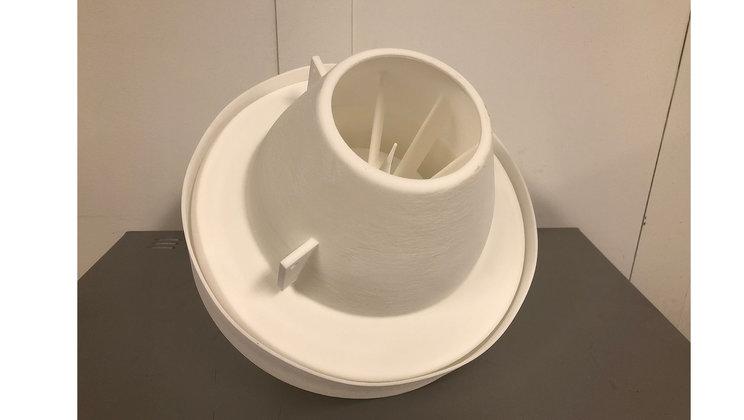- FMA
- The Fabricator
- FABTECH
- Canadian Metalworking
Our Publications
Categories
- Additive Manufacturing
- Aluminum Welding
- Arc Welding
- Assembly and Joining
- Automation and Robotics
- Bending and Forming
- Consumables
- Cutting and Weld Prep
- Electric Vehicles
- En Español
- Finishing
- Hydroforming
- Laser Cutting
- Laser Welding
- Machining
- Manufacturing Software
- Materials Handling
- Metals/Materials
- Oxyfuel Cutting
- Plasma Cutting
- Power Tools
- Punching and Other Holemaking
- Roll Forming
- Safety
- Sawing
- Shearing
- Shop Management
- Testing and Measuring
- Tube and Pipe Fabrication
- Tube and Pipe Production
- Waterjet Cutting
Industry Directory
Webcasts
Podcasts
FAB 40
Advertise
Subscribe
Account Login
Search
Volvo Trucks additively manufactures shop devices for its Virginia plant
- September 24, 2019
- News Release
- Additive Manufacturing

There are more than 500 3D-printed tools and devices in use at the Volvo Trucks plant in Virginia. Credit: Volvo
Volvo Trucks North America 3D-prints tools, fixtures, gauges, platens, and other devices used in manufacturing processes at its New River Valley (NRV) plant in Dublin, Va., where all trucks for the North American market are built.
3D printing speeds production and facilitates continuous quality improvements, said the company.
“Volvo Trucks began exploring the use of 3D technology with a prototype approach, identifying opportunities to improve quality in manufacturing,” said Franky Marchand, vice president and general manager of NRV. “Several years later, we can now say that 3D printing has become an integral component to our manufacturing processes and culture at NRV.”
Additive also saves money. For example, the company 3D-printed a one-piece diffuser used in a paint atomizer cleaning process, which saved more than $1,000 per part and eliminated a multiple-piece component.
The truck-maker 3D-prints exact copies from models, improving quality and precision. The technology effectively eliminates error, increasing the chances of first-time-through production of assembly tools and fixtures, streamlining the manufacturing process and enabling customers to receive end products quicker.
Today there are more than 500 3D-printed devices in use at NRV. All were printed at the Volvo Innovative Projects laboratory at the Dublin facility. The lab primarily uses selective laser sintering (SLS) to sinter powdered-plastic material into a solid structure that is then rigorously tested and put into use on the shop floor.
SLS allows Volvo engineers to design parts by drawing the end product, putting it in the machine, and leaving it to print in a matter of hours during a work day or overnight, cutting down on the number of hours spent building parts through traditional tooling methods.
The technology also increases flexibility in manufacturing by reducing the time spent waiting for new parts from vendors. This, in turn, cuts inventory expenses by eliminating space needed to house traditionally produced tools.
“While the technology has only been in use for a handful of years, it is already proving to be a valuable component of the manufacturing process at NRV, significantly saving production time and parts costs and continually improving quality,” said Adam Crowder, manager of advanced manufacturing technology at NRV.
- Podcasting
- Podcast:
- The Fabricator Podcast
- Published:
- 04/16/2024
- Running Time:
- 63:29
In this episode of The Fabricator Podcast, Caleb Chamberlain, co-founder and CEO of OSH Cut, discusses his company’s...
- Trending Articles
- Industry Events
16th Annual Safety Conference
- April 30 - May 1, 2024
- Elgin,
Pipe and Tube Conference
- May 21 - 22, 2024
- Omaha, NE
World-Class Roll Forming Workshop
- June 5 - 6, 2024
- Louisville, KY
Advanced Laser Application Workshop
- June 25 - 27, 2024
- Novi, MI
























